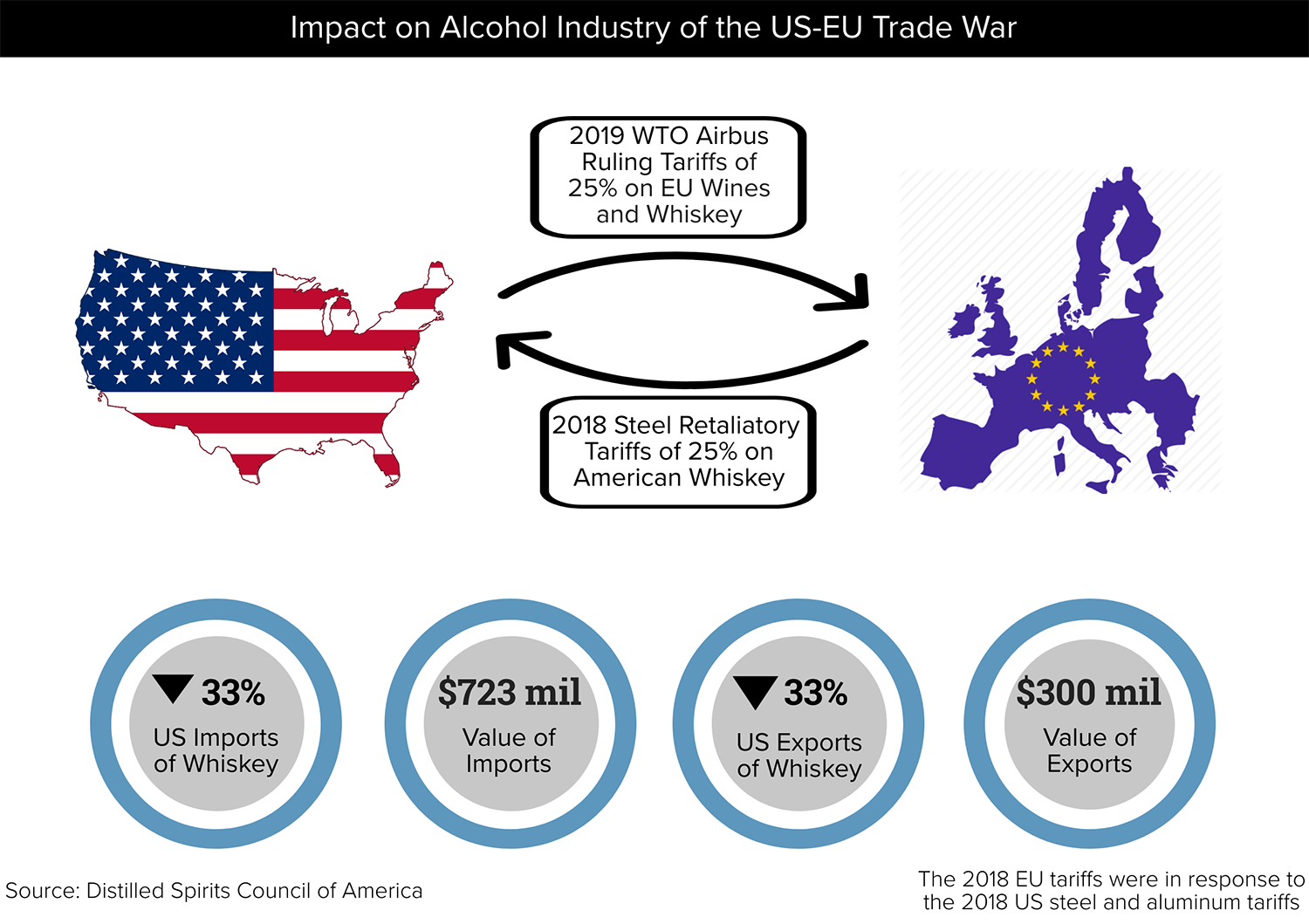EU Tariffs: Trump Pushes Back Deadline To July 9th

Table of Contents
The Original EU Tariff Threat & Its Potential Impact
The initial threat of EU Tariffs from the US targeted several key sectors, promising significant economic repercussions. The potential imposition of these tariffs sparked fear and uncertainty within the global economic community.
Sectors Most Affected
Industries such as aerospace and automobiles were particularly vulnerable. The potential impact on these sectors was projected to be severe.
- Aerospace: Boeing, a major US aerospace company, faced potential retaliatory tariffs on its aircraft exports to Europe.
- Automobiles: US car manufacturers exporting to the EU, along with associated parts suppliers, were bracing for significant losses.
- Agricultural Products: Certain agricultural exports from the US were also on the list of potential tariff targets.
Economists estimated potential job losses in the hundreds of thousands, along with billions of dollars in lost revenue for affected companies. These figures highlighted the gravity of the initial threat.
Retaliatory Measures from the EU
The EU didn't take the threat lightly. In response to the potential US tariffs, the EU announced plans for its own retaliatory measures.
- Tariffs on US goods: The EU planned to impose tariffs on a wide range of US products, mirroring the potential US actions. These included agricultural goods, industrial products, and consumer goods.
- Trade disputes: The threat of tariffs escalated existing trade disputes between the US and EU. These disputes encompassed intellectual property rights, subsidies, and regulatory differences.
- WTO complaints: Both sides threatened to escalate the conflict through formal complaints to the World Trade Organization (WTO). This would have further complicated and prolonged the resolution process.
The potential impact of these retaliatory tariffs on US businesses was equally concerning, threatening to damage sectors already facing economic headwinds.
Global Economic Uncertainty
The EU Tariff dispute significantly contributed to global economic uncertainty. Investors grew hesitant, supply chains were disrupted, and the overall market outlook became considerably more pessimistic. The escalating trade war between the two economic giants threatened to trigger a broader global recession.
The July 9th Deadline – A Temporary Reprieve?
The postponement of the EU Tariffs to July 9th provides a temporary breathing space, but it does little to alleviate the underlying tension.
Reasons for the Delay
Several factors likely contributed to the decision to postpone the implementation of tariffs.
- Ongoing Trade Negotiations: Discussions between the US and the EU likely played a significant role. While details remain confidential, both sides may have agreed to continue negotiations to seek a mutually beneficial resolution.
- Political Considerations: Domestic political pressures within both the US and the EU might have also contributed to the decision. The potential economic fallout could have negative repercussions for both administrations.
- Economic Concerns: The potential damage to global markets, caused by escalating trade disputes, likely played a part in delaying the tariff decision.
However, the reasons for the delay are not fully transparent, and speculation continues.
Uncertainty Remains
While the delay is a positive development for now, it does not guarantee a resolution. Several scenarios remain possible.
- Further Delays: Negotiations could extend beyond July 9th, resulting in further postponements.
- Escalation: Failure to reach an agreement could lead to the imposition of the tariffs, potentially triggering a full-blown trade war.
- Partial Resolution: A partial agreement could be reached, addressing some issues but leaving others unresolved.
The uncertainty surrounding future trade relations between the US and the EU remains a major challenge for businesses.
Impact on Businesses
The delay offers some relief but does not eliminate the need for businesses to prepare.
- Contingency Planning: Businesses should continue developing contingency plans to mitigate the impact of potential future tariffs, regardless of whether they are imposed on July 9th or later.
- Risk Assessment: A thorough risk assessment should be performed to identify potential vulnerabilities and develop strategies to protect their bottom line.
- Communication: Open communication with stakeholders, such as suppliers, customers, and investors, is crucial to manage uncertainty effectively.
Navigating the Uncertainties of EU-US Trade Relations
The current climate requires businesses to be proactive and adaptable.
Strategies for Businesses
Several key strategies can help businesses navigate the ongoing uncertainty.
- Supply Chain Diversification: Reducing reliance on a single source of supply can mitigate the impact of tariffs. Businesses should explore alternative suppliers in other regions to diversify their supply chains.
- Lobbying Efforts: Businesses can participate in lobbying efforts to influence trade policy and advocate for their interests. This may involve joining industry associations or working directly with government officials.
- Hedging Strategies: Financial hedging strategies, such as currency hedging, can help mitigate the impact of potential price fluctuations caused by trade disputes.
Proactive adaptation is vital for survival in this challenging environment.
Monitoring Trade Developments
Staying informed is critical. Businesses should monitor developments closely, using reliable sources such as:
- Official Government Websites: Government websites provide official updates on trade negotiations and policy changes.
- Reputable News Outlets: Reputable financial news organizations often provide in-depth analysis of trade-related events.
- Industry Associations: Trade associations often provide updates and resources relevant to their members.
Conclusion: Staying Ahead of the Curve with EU Tariffs
The initial threat of EU Tariffs, the subsequent delay until July 9th, and the lingering uncertainty highlight the unpredictable nature of international trade relations. The potential economic repercussions for businesses are significant. It's crucial to remember that this delay is only temporary. The core issues fueling this trade dispute haven’t been resolved.
Monitor EU Tariffs closely, and prepare your business for potential changes. Staying updated on the latest EU Tariff developments is essential for effective risk management. Proactive planning, risk assessment, and flexible adaptation are crucial for businesses to navigate this challenging landscape and maintain their competitiveness. The future of EU-US trade relations remains uncertain, but businesses that are well-prepared will be best positioned to weather the storm.

Featured Posts
-
 Kanye Wests Wife Bianca Censori Stuns In Black Lingerie And Stilettos
May 28, 2025
Kanye Wests Wife Bianca Censori Stuns In Black Lingerie And Stilettos
May 28, 2025 -
 Cristiano Ronaldo Nun Al Nassr Transferi Tuem Ayrintilar
May 28, 2025
Cristiano Ronaldo Nun Al Nassr Transferi Tuem Ayrintilar
May 28, 2025 -
 Rose Rm Jimin Ateez And Stray Kids Receive Ama Nominations
May 28, 2025
Rose Rm Jimin Ateez And Stray Kids Receive Ama Nominations
May 28, 2025 -
 Merrills Two Run Blast Leads Padres To 5 2 Victory Against Guardians
May 28, 2025
Merrills Two Run Blast Leads Padres To 5 2 Victory Against Guardians
May 28, 2025 -
 Finding A No Credit Check Loan With Guaranteed Approval Direct Lender Guide
May 28, 2025
Finding A No Credit Check Loan With Guaranteed Approval Direct Lender Guide
May 28, 2025
